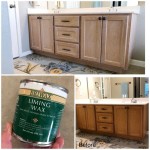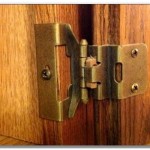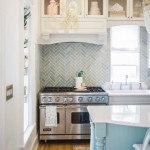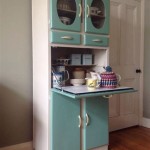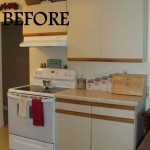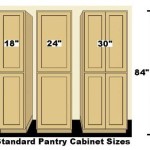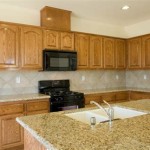```html
Multi Wood Kitchen Cupboard: A Comprehensive Guide
The kitchen, often considered the heart of the home, demands functional and aesthetically pleasing storage solutions. Among the various cabinet options available, the multi wood kitchen cupboard stands out for its versatility, durability, and unique visual appeal. These cupboards, constructed using a combination of different wood types, offer a harmonious blend of color, texture, and grain patterns, creating a distinctive and personalized kitchen environment. This article explores the characteristics, advantages, design considerations, and maintenance aspects of multi wood kitchen cupboards.
Understanding Multi Wood Construction
Multi wood construction, in the context of kitchen cupboards, refers to the utilization of two or more different wood species in the creation of a single cabinet unit. This can involve using one type of wood for the cabinet frame, another for the door panels, and yet another for the shelving. The choice of wood species is often driven by considerations of aesthetics, cost, availability, and structural properties. For example, a cabinet frame might be constructed from a durable hardwood like maple or oak, while the door panels could feature a more visually striking wood like cherry or walnut. The contrast in color and grain adds visual interest and prevents the kitchen from appearing monotonous.
The process of creating multi wood cupboards requires careful planning and execution. Manufacturers must consider the different expansion and contraction rates of each wood species to prevent warping or cracking over time. Proper joinery techniques, such as mortise and tenon joints or dovetail joints, are crucial for ensuring the structural integrity of the cabinet. Furthermore, the finishing process must be tailored to the specific characteristics of each wood type to achieve a uniform and durable surface.
There are several different ways to incorporate multiple wood types in kitchen cupboards. One approach is to use different wood species for different components, such as the cabinet frame, doors, drawers, and interior shelving. Another option is to create decorative accents by incorporating inlays or veneers of contrasting wood into the door panels or drawer fronts. A third approach is to use different wood tones within the same wood species. For instance, using both heartwood and sapwood from the same tree can create subtle variations in color and grain, adding depth and dimension to the cabinet design.
Advantages of Multi Wood Kitchen Cupboards
Multi wood kitchen cupboards offer numerous advantages over cabinets constructed from a single wood species. These advantages extend to both the aesthetic appeal and the functional performance of the kitchen space. One of the primary benefits is the enhanced visual interest and personalized style that multi wood construction provides. By combining different wood types, homeowners can create a unique and customized kitchen design that reflects their individual tastes and preferences. The contrasting colors, grain patterns, and textures of different woods add depth and character to the space, making it more inviting and visually appealing.
Another advantage of multi wood cupboards is their potential for increased durability and stability. By carefully selecting wood species with complementary properties, manufacturers can create cabinets that are more resistant to warping, cracking, and other forms of damage. For example, a cabinet frame constructed from a dense hardwood like oak can provide a strong and stable foundation, while door panels made from a lighter wood like pine can reduce the overall weight of the cabinet and prevent sagging. The combination of different wood types can also enhance the cabinet's resistance to moisture and temperature fluctuations.
Cost-effectiveness can also be a key advantage. Utilizing less expensive wood species for certain less-visible components of the cabinet, such as the interior shelving or cabinet backs, can help to reduce the overall cost of the project without compromising the aesthetic appeal or durability of the finished product. For example, a cabinet with solid cherry doors and a maple frame can be significantly more expensive than a cabinet with cherry veneer doors and a poplar frame. By carefully selecting the appropriate wood species for each component, homeowners can achieve the desired look and feel while staying within their budget.
Furthermore, multi wood kitchen cupboards allow for greater design flexibility. By mixing and matching different wood types, homeowners can create a wide range of different looks, from traditional and rustic to modern and contemporary. The possibilities are virtually endless. This flexibility is especially valuable for homeowners who have existing furniture or décor that they want to complement or who are looking to create a distinctive and personalized kitchen space. They can also provide design opportunities to highlight specific areas. For example, using a contrasting wood for the island base to create a focal point.
Design Considerations for Multi Wood Kitchen Cupboards
Designing kitchen cupboards with multiple wood species requires careful consideration of several factors, including the color palette, grain patterns, and wood characteristics. The goal is to create a harmonious and balanced design that enhances the overall aesthetic appeal of the kitchen. One of the most important considerations is the color palette. The different wood species should complement each other in terms of color and tone. While contrasting colors can create visual interest, they should be carefully selected to avoid clashing or overwhelming the space. A good rule of thumb is to stick to a limited number of colors and to choose woods that have similar undertones, such as warm or cool.
The grain patterns of the different wood species should also be taken into account. Some woods have a straight and uniform grain, while others have a more swirling or figured grain. Mixing woods with drastically different grain patterns can create a busy and chaotic look. It is generally best to choose woods with similar grain patterns or to use woods with contrasting grain patterns sparingly, as accent pieces. The scale of the grain pattern should also be considered. A large, bold grain pattern can be overwhelming in a small space, while a fine, subtle grain pattern may be lost in a large space.
The characteristics of each wood species, such as its density, hardness, and resistance to moisture, should also be considered when designing multi wood kitchen cupboards. Some woods are better suited for certain applications than others. For example, a dense and durable hardwood like oak is a good choice for cabinet frames and door rails, while a lighter and more easily workable wood like pine is better suited for door panels and interior shelving. The wood should also be compatible with the intended finish. Some woods absorb stain more evenly than others, and some woods may require a special sealant or primer to prevent bleeding or discoloration.
The overall style of the kitchen should also influence the design of the multi wood cupboards. A traditional kitchen may call for a more formal and ornate design, with raised panel doors, decorative moldings, and intricate hardware. A modern kitchen may call for a more minimalist and streamlined design, with flat panel doors, clean lines, and simple hardware. The choice of wood species and the way they are combined should reflect the overall style of the kitchen.
Maintaining Multi Wood Kitchen Cupboards
Proper maintenance is essential for preserving the beauty and longevity of multi wood kitchen cupboards. The specific maintenance requirements will vary depending on the type of wood, the finish, and the amount of wear and tear the cabinets are subjected to. However, there are some general guidelines that apply to most multi wood kitchen cupboards. Regular cleaning is essential for removing dust, dirt, and grease buildup. The cabinets should be wiped down regularly with a soft, damp cloth. Avoid using harsh chemicals or abrasive cleaners, as these can damage the finish. For stubborn stains or grease, a mild soap solution can be used, followed by a thorough rinsing and drying.
Protecting the cabinets from moisture is also crucial. Water damage can cause warping, cracking, and discoloration of the wood. Wipe up spills immediately and avoid placing wet items on the countertops near the cabinets. Ensure that the kitchen is well-ventilated to prevent moisture buildup. In areas with high humidity, a dehumidifier may be necessary to protect the cabinets.
Regularly inspect the cabinets for signs of damage, such as scratches, dents, or cracks. Small scratches can often be repaired with a touch-up pen or a furniture polish. Deeper scratches or dents may require professional repair. Cracks should be repaired as soon as possible to prevent them from spreading. Depending on the extent of the damage, the repair may involve filling the crack with wood filler, sanding it smooth, and refinishing the area.
Applying a fresh coat of finish or sealant every few years can help to protect the cabinets from wear and tear and to keep them looking their best. The type of finish will depend on the type of wood and the desired look. Polyurethane is a popular choice for kitchen cabinets because it is durable and water-resistant. However, it can yellow over time. Varnish is another option that provides good protection and is available in a variety of sheens. Oil-based finishes are also a good choice for multi wood cupboards, as they penetrate the wood and enhance its natural beauty. They add a protective layer that helps prevents fading from sunlight.
```
Multiwood Kitchen Cabinet

Kitchen Cupboard Designs Kerala Modular

Kitchen Cupboard Designs Kerala Modular

Wooden Straight Multiwood With Autopaint Finished Modular Kitchen Work Provided Wood Furniture

Learn About Diffe Materials For Kitchen Cabinets To Find The One That Suits Your Needs

Kitchen Cupboard Designs Kerala Modular

Multi Function Kitchen Living Room Storage Cabinet Solid Wood China Cabinets Accessories Made In Com

Wooden Straight Multiwood With Autopaint Finished Modular Kitchen Work Provided Wood Furniture

Multi Level Cabinets Edgewood Cabinetry

Mahogany Wood Veneer Kitchen Cupboards China Cupboard Design Made In Com
Related Posts

